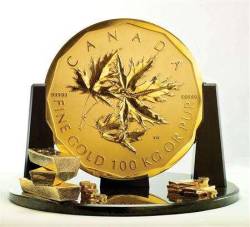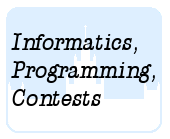Подразделы
| 1034. Gangs |
| 1035. Smeech |
| 1036. The Dragon of Loowater |
| 1037. Tournament |
| 1038. Wedding |
| 1039. Exchange Rates |
| 1040. Conformity |
| 1041. Pseudoprime numbers |
| 1042. Friend or Foe? |
| 1043. Carpool |
Дата и время
06/12/2025 03:40:19
 Лето 12
Лето 12
A. Gangs B. Smeech C. The Dragon of Loowater D. Tournament E. Wedding F. Exchange Rates G. Conformity H. Pseudoprime numbers I. Friend or Foe? J. Carpool
 F. Exchange Rates
F. Exchange Rates
 Олимпиадные задачи на английском языке
Олимпиадные задачи на английском языке
| 03/07/2008 | Лето 2008 дорешивание (12F) |
| 28/07/2008 | Лето 2008 - 12 (F) |
| 24/07/2013 | Лето 2013-16 (командная) (F) |
Ограничения: время – 1s/2s, память – 64MiB Ввод: input.txt или стандартный ввод Вывод: output.txt или стандартный вывод 
Послать решение Blockly Посылки Темы Где Обсудить (0)

Now that the Loonie is hovering about par with the Greenback, you
have decided to use your $1000 entrance scholarship to engage in
currency speculation. So you gaze into a crystal ball which
predicts the closing exchange rate between Canadian and U.S. dollars
for each of the next several days.
On any given day, you can switch all of your money from
Canadian to U.S. dollars, or vice versa, at the prevailing exchange
rate, less a 3% commission, less any fraction of a cent.
Assuming your crystal ball is correct, what's the maximum amount
of money you can have, in Canadian dollars, when you're done?
The input contains a number of test cases, followed by a line
containing 0. Each test case begins with `0\ <\ d\ ≤\ 365`, the number of days that your
crystal ball can predict. `d` lines follow, giving the price
of a U.S. dollar in Canadian dollars, as a real number.
For each test case, output
a line giving the maximum amount of money, in Canadian dollars and cents, that
it is possible to have
at the end of the last prediction, assuming you may exchange
money on any subset of the predicted days, in order.
Sample Input
3 1.0500 0.9300 0.9900 2 1.0500 1.1000 0
Output for Sample Input
1001.60 1000.00

 Начало
Начало